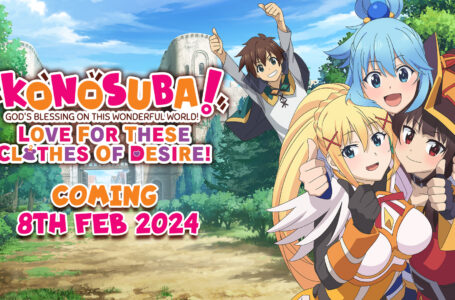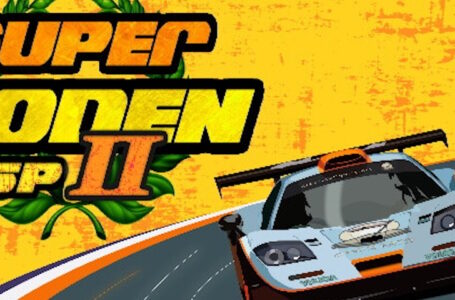Could MultiVersus be the “Fortnite of fighting”?
Yes, yes, I know, I know, I cringed while writing that headline too, but having spent a bit of time with MultiVersus this afternoon, I think it’s a valid comparison to draw — and I’m not the only one who has been making such comparisons, either.
For the unfamiliar, MultiVersus is the new platform fighter (read: Smash clone) from Warner Brothers. It’s currently available in open beta, and it follows a free-to-play model. It’s free to download and get started, but acquiring new characters requires either grinding in-game currency through playing, or paying up for the game’s hard premium currency to unlock things immediately. There’s also a Battle Pass which, as always in this kind of thing, has a free and a paid premium tier, allowing you to unlock a series of rewards over the course of a “season”, with the more interesting rewards, of course, being on the paid track.
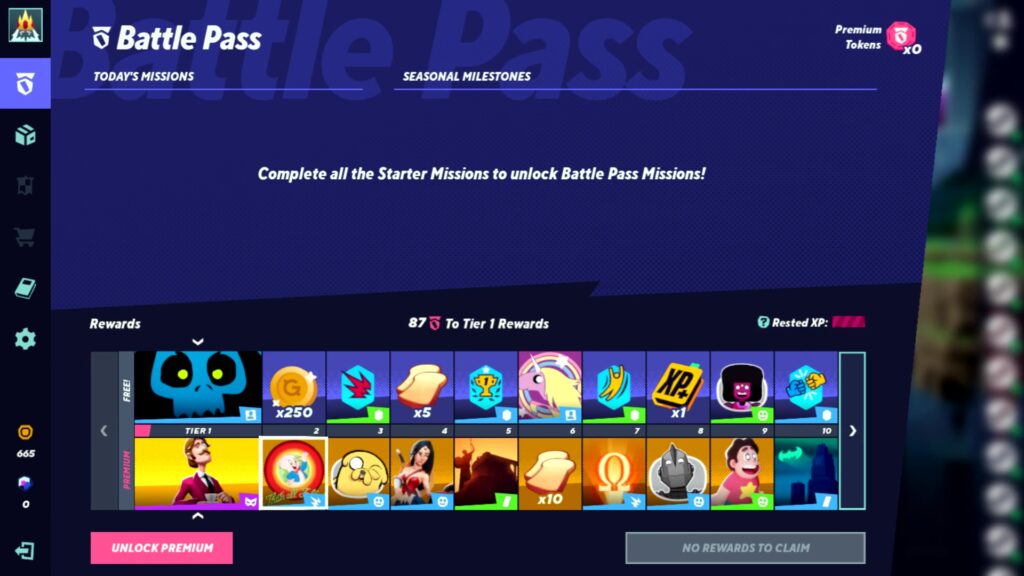
MultiVersus is everything I feel like I should hate and detest — and the fact that I’m not a particular fan of many Warner Bros. characters in the first place either doesn’t help matters — and yet I found myself actually having a good time with it. Moreover, even despite jumping immediately into online play against other people rather than cowering in the corner with bots like I usually do, I didn’t find myself immediately demoralised and never wanting to touch it ever again. Rather, I found the experience quite invigorating and enjoyable, and I’m actually curious to give it a bit more of a go later.
This is the Fortnite angle. Take an established formula that has traditionally been regarded as fairly hardcore — first- and third-person shooters in the case of Fortnite, fighting games in the case of MultiVersus — and make it more accessible. Remove the barrier of entry completely by making it free to get started, provide incentive for people to keep playing after they’ve given it a quick go with various drip-feeds of rewards, and implement a solid matchmaking and netplay system to allow for constant competition where you never have to wait long for an opponent.
I typically eschew free-to-play games because I tend to find the business model intrusive, particularly in the case of story-centric games with gacha mechanics. It’s why I ended up bouncing off things like Granblue Fantasy and Fate/Grand Order despite their solid storytelling and characterisation, and it’s why I’ve never even bothered installing Genshin Impact.
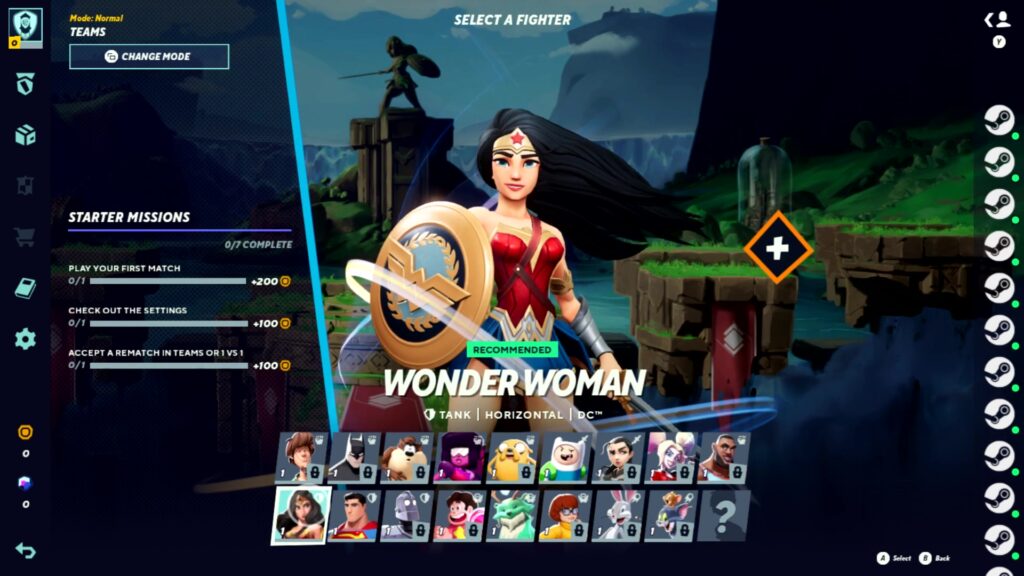
But for titles like MultiVersus this model makes a lot more sense. There is absolutely no attempt to contextualise anything that is going on here; it’s simply a toybox where various Warner Bros. characters battle it out to prove who is the “best”. Why? It doesn’t matter. It’s just a game. With that in mind, it somehow feels less obtrusive when you stumble across parts of the game that you need to pay up or grind for. Don’t get me wrong, I’d be tearing this game a new arsehole if it was a full-price release, because that shit has no place in a title you’ve already paid anywhere between £20 and £60 for — but as a free-to-play game? It works.
The limitations imposed on you when you start playing MultiVersus are a good means of getting to know the game. With just a few characters available to you across the “Brawler”, “Tank” and “Support” archetypes, you’re encourage to find the basic play style you’re most comfortable with, and then start getting to know one character a bit better.
Each character has a “mastery” level, which allows you to unlock new features — including passive “perks” that can benefit both you and any teammates you have — and thus there’s incentive to spend some time familiarising yourself with one of the initial lineup. And that initial lineup are easy to handle and understand, too; their various moves make sense and you’ll quickly find it easy to understand the best times at which to make use of them.
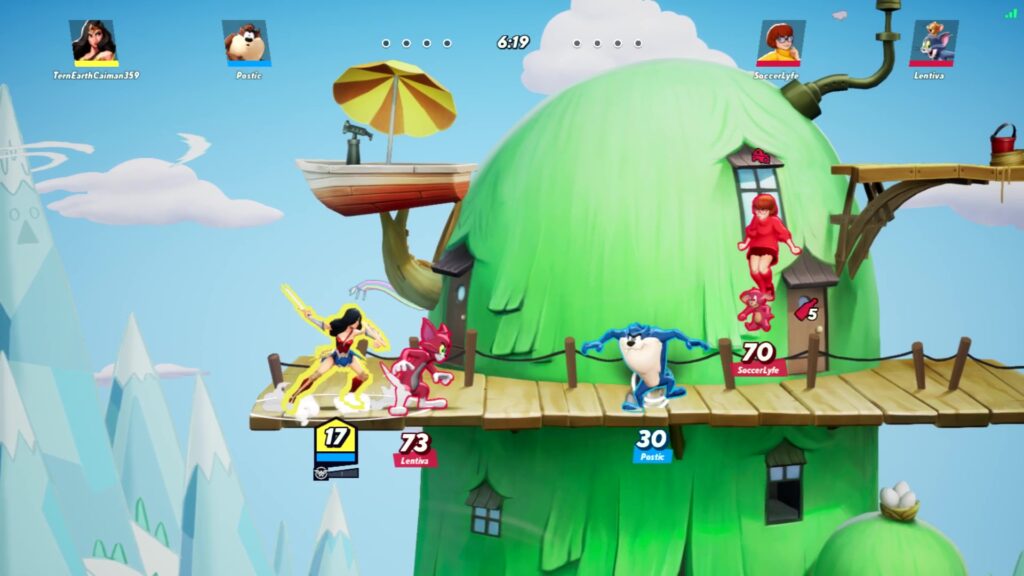
MultiVersus’ combat is Super Smash Bros. with a few twists. For starters, there’s no “up to jump” nonsense here, which eliminates one of my most consistent frustrations with Smash’s controls. Here, you have one button to jump and another to dodge, with the latter working both on the ground and in the air. Then, you’ve got one attack button (with four different attacks assigned to it according to whether or not you’re pushing a particular direction when you press it) and one special button (likewise with four options). That’s all you really need to know to get started.
A brief, rather tedious but nonetheless reasonably helpful tutorial introduces platform fighter newcomers to the basics of the genre, and is worth completing because it rewards you with a playable character. From thereon, you have the option to play against bots or real players, and in both cases you can take on 1 vs 1 fights, 2 vs 2 team battles, or 2 vs AI survival fights. There’s also a training room called The Lab where you can practice your moves against a customisable opponent, and this can be accessed while you’re waiting for matchmaking if it’s taking a while.
Online performance was absolutely flawless while I played; there was no evidence of stuttering or lag, and controls felt completely responsive at all times. There was no point at which I felt I was battling against other people’s connections rather than their characters, and the experience was as smooth as if I was playing against offline bots. There’s obviously been some real effort made with the netcode for this game, which is sure to please those who care particularly strongly about such things.
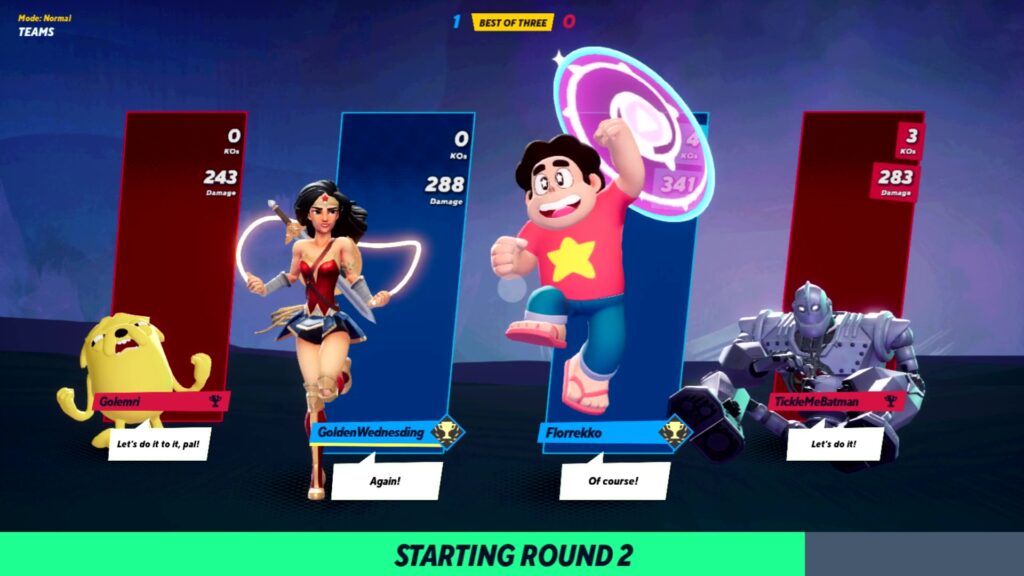
Social features are pretty limited right now; there’s no real-time chat, for example, and communicating with other players is perhaps best handled through external software such as Steam right now. You can, however, browse people you’ve played with recently, check out their MultiVersus and Steam profiles where applicable, and invite them to play in a party with you. Matches also default to a “best of three” format if all the participants agree; any player is free to drop out at any time, however.
Positivity is encouraged through the ability to “Toast” other players after you have played with them — though rather peculiarly it requires another in-game currency to do this, and it’s not made altogether clear how you acquire it. At the other end of the spectrum, blocking toxic players or cheaters is a simple matter of hitting a button in the social panel.
Speaking of cheaters, the game’s PC version makes use of the Easy Anti-Cheat (aka EAC) software, which some players will doubtless be averse to — though note that EAC is a fairly widely adopted anti-cheat solution at this point, appearing in a variety of different games including, yes, Fortnite.
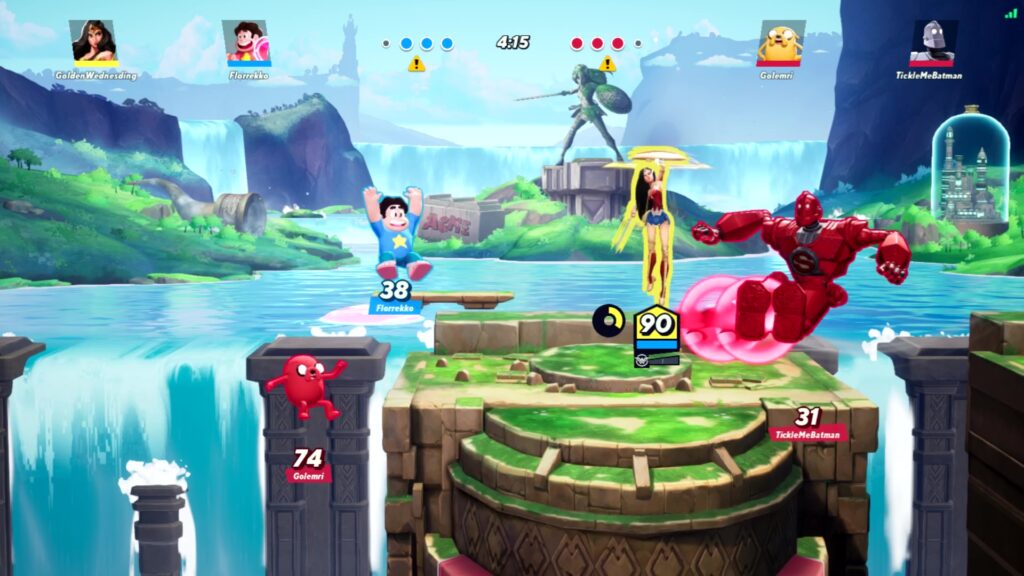
Anti-cheat software can sometimes be a bit of a pain in the arse on PC, but outside of MultiVersus taking a little longer to load than one might expect for a game like this, it didn’t seem to have any noticeable impact on the in-game action. Let’s just hope MultiVersus’ implementation of EAC doesn’t suffer any account-locking bugs — Apex Legends was in the news recently for incorrectly banning players’ accounts should they suffer simple connection errors, for example.
There are some particularly praiseworthy features about MultiVersus. An extensive glossary of in-game terms makes picking up game-specific lingo very straightforward. A ton of optional tutorials allow you to practice more advanced skills beyond the initial lesson. And in-game feedback is absolutely excellent, with a fully customisable interface making it clear how the match is going, what the status of each character is and even the effects that various offensive and defensive moves apply when successfully performed.
My one hesitation with MultiVersus right now is that there just aren’t any characters that I really care about. Wonder Woman is neat, yes, and I’ll always have a soft spot for Bugs Bunny and Tom and Jerry, but there just isn’t the same “magic” that Smash has in terms of the roster. I’m sure this will change over time — Warner Bros. has a vast catalogue of characters they could potentially draw from over the long term, after all — but right now Smash absolutely still has a significant lead in terms of making me excited to try different fighters.
It also has a lot more for the single player to enjoy, while MultiVersus is very much about a simple, straightforward competitive fighting experience. Which isn’t necessarily a bad thing — but it does mean that the package as a whole has a bit of a different focus to Smash.
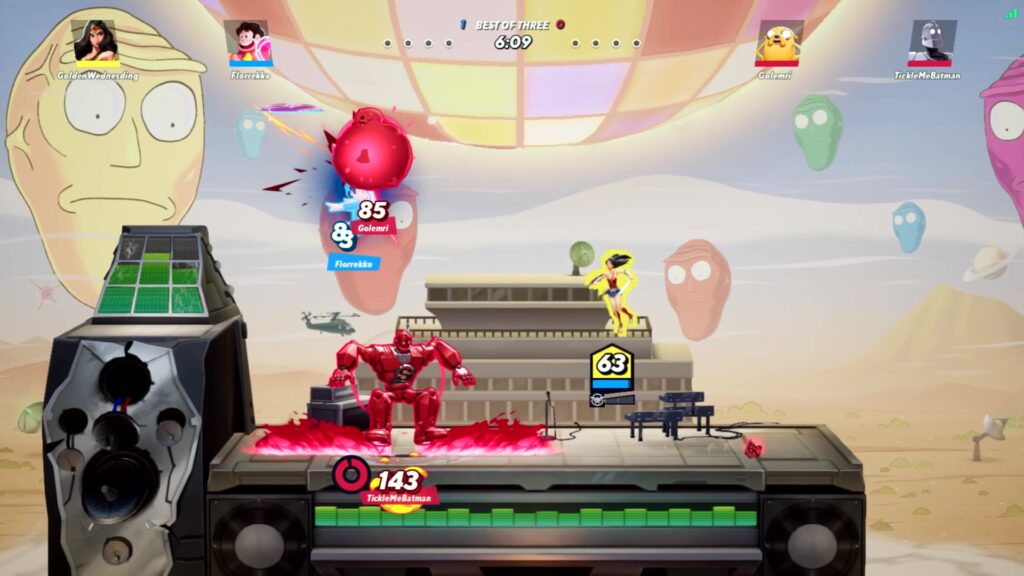
There’s no risk getting involved with MultiVersus, though — unless you pay attention to the tinfoil hat-wearing people who really don’t like EAC — so even if you, like me, are not at all sure about the game’s roster or competitive focus, it’s still worth giving a go. You might just find yourself with a new gaming obsession — and in the long-term, perhaps it’ll convince more fighting game makers to consider taking the free-to-play approach. It looks set to be a good means of bringing a lot more people into the community if the early performance of this game is anything to go by.
Multiversus is available for free in open beta now for PC via Steam and Epic Games Store, PlayStation 4/5 and Xbox One/Series boop.
Join The Discussion
Rice Digital Discord
Rice Digital Twitter
Rice Digital Facebook
Or write us a letter for the Rice Digital Friday Letters Page by clicking here!
Disclosure: Some links in this article may be affiliate links, which means we may earn a small commission if you make a purchase after clicking on them. This is at no additional cost to you and helps support Rice Digital!
- Letter from the Editor: passing the torch - June 30, 2023
- Super Woden GP 2 is looking promising - June 30, 2023
- Inti Creates is making a 32 bit-style Love Live action platformer - June 26, 2023




